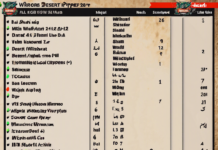Breathtaking landscapes blanketed in pristine white snow, frosted trees dripping with icicles, and fluffy snowflakes lazily swirling down from the heavens – the society of snow offers a visual feast that captivates the hearts of many. Whether you’re an avid winter sport enthusiast, a nature lover, or a photographer seeking to capture the essence of this magical season, embracing the beauty of snow through photography can be a rewarding experience.
Understanding the Essence of Snow in Photography
Before diving into the technicalities of capturing the society of snow through a lens, it’s crucial to understand the essence of snow in photography. Snow has the power to transform ordinary scenes into ethereal landscapes, adding a touch of tranquility and purity to the frame. The soft, diffused light that often accompanies snowy weather creates a serene atmosphere, perfect for creating stunning images.
Techniques for Photographing Snow
Photographing snow presents unique challenges due to its reflective properties and the potential for overexposure. To overcome these challenges and create compelling snowscapes, consider the following techniques:
- Adjusting Exposure: Snow can trick your camera’s light meter, leading to underexposed images. Increase your exposure compensation by +1 to +2 stops to retain the brightness and detail of the snow.
- White Balance: Set your camera’s white balance to “Cloudy” or “Shade” to counteract the cool blue tones that often dominate snowy scenes.
- Composition: Incorporate elements like leading lines, contrasting colors, and textures to add interest to your snow photographs.
- Depth of Field: Experiment with different aperture settings to control the depth of field and create a sense of depth in your images.
- Shutter Speed: Use a fast shutter speed to freeze falling snowflakes or a slow shutter speed to capture their graceful motion.
The Magic of Macro Photography
Macro photography offers a unique perspective on the intricate beauty of individual snowflakes. By using a macro lens or extension tubes, you can capture the exquisite details of snow crystals, showcasing their symmetrical shapes and delicate patterns. When photographing snowflakes, look for a clean background to make the intricate designs stand out, and consider using a tripod to ensure sharp focus.
Tips for Capturing Winter Wildlife
Snow transforms the natural world into a winter wonderland, providing opportunities to photograph wildlife in a serene and picturesque setting. When photographing animals in the snow, remember these tips:
- Patience: Wildlife may be less active in cold weather, so be prepared to wait for the perfect shot.
- Camouflage: Blend into your surroundings and avoid disturbing the animals to capture authentic behavior.
- Telephoto Lens: Use a telephoto lens to maintain a safe distance and capture detailed shots of wildlife against the snowy backdrop.
Editing Snow Photos
Post-processing plays a crucial role in enhancing the beauty of your snow photographs. Consider using editing tools like Adobe Lightroom or Photoshop to adjust exposure, contrast, and white balance, and to remove distractions or blemishes from your images. When editing snow photos, aim for a balance between highlighting the purity of the snow and preserving the natural look of the scene.
Frequently Asked Questions (FAQs)
Q1: How can I prevent my snow photos from looking gray and dull?
A1: To avoid gray and dull snow photos, ensure proper exposure by adjusting your camera settings and consider enhancing contrast and saturation during post-processing.
Q2: What are some creative ways to capture the society of snow in photography?
A2: Experiment with different angles, perspectives, and compositions to infuse creativity into your snow photographs. Try capturing close-up details, unique textures, or unexpected reflections in the snow.
Q3: How can I protect my camera equipment in snowy conditions?
A3: Use a camera rain cover or plastic bag to shield your gear from snowflakes or moisture. Keep spare batteries warm by storing them in an inside pocket.
Q4: Are there any safety tips I should follow when photographing snow in remote locations?
A4: Inform someone of your whereabouts before heading out to remote snow photography locations. Dress warmly, carry essential supplies, and be mindful of changing weather conditions.
Q5: What settings should I use for photographing snow at night?
A5: When photographing snow at night, use a tripod to stabilize your camera, set a long exposure for capturing ambient light, and adjust your white balance to prevent color casts.
Embrace the enchanting beauty of the society of snow through photography, and let your images convey the serene elegance and grace of this captivating season. Experiment with different techniques, perspectives, and subjects to create compelling snowscapes that reflect the magic of winter in all its glory.









